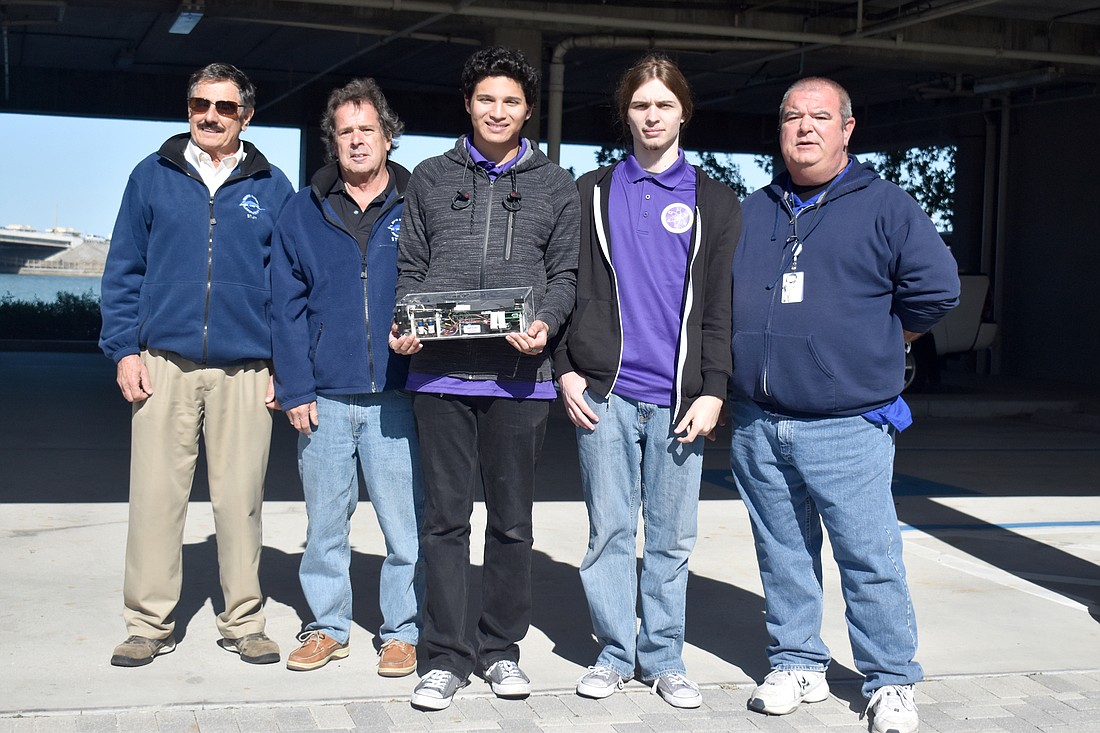- November 23, 2024
-
-
Loading

Loading

Booker High School Engineering Liaison Tony McCrea said there is one maybe-problem in engineering education.
“...They do a lot of theories, they teach them the software, they teach them theories, things like this, but it doesn’t really have the same type of impact as if you can take it all the way through to reality,” McCrea said.
So, McCrea went out in the community searching for partnerships so his students could bring their work to reality. He approached Mote Marine Laboratory and Aquarium, whose staff, he said, was open to the idea of working with Booker students.
Through the partnership, two Booker seniors, Victor Arismendi and Evan Lefils, used their school’s 3D printer and other tools to create housings for Mote’s new red tide detectors.
Mote’s Programmable Hyperspectral Seawater Scanner, PHySS, detects harmful blooms of Karenia brevis, better known as red tide. The PHySS is an updated and advanced version of Mote’s original red tide detector, the BreveBuster.
Mote instrumentation specialist Jim Hillier, who helped design the patented BreveBuster, said the PHySS is like switching to a high-definition T.V.
The PHySS and BreveBuster both shine specific kinds of light through algae samples and use a spectrophotometer to detect which wavelengths of light are absorbed or reflected. The PHySS can detect these measurements with 16 times greater resolution than the BreveBuster could, a statement from Mote said.
Hillier said it’s like matching paint. The PHySS detects the presence of red tide by measuring the color in the water. When the machine sees different color bands it will report a degree of how well the bands match red tide.
The PHySS needs a specific kind of housing, which is where Arismendi and Lefils come in. The duo created the special enclosure using blueprints from Mote and their school’s lab tools. Already, the enclosure is being used on Mote’s dock.
The students said it was a “pretty straightforward” task, but they did hit some speed bumps.
“The only kind of challenge we had was caused from ourselves, like little mistakes,” Arismendi said.
One such small obstacle came when they accidentally printed their school’s logo backward and upside down. Overall, the students said the project took them only two months. They got a tour of Mote’s research lab too, to see how they’re product would be used.
Including the logo was something the students came up with on their own.
“They took the extra step to digitally create Booker’s logo, our engineering department logo and Mote’s logo and emboss it on because we knew it was sort of an ambassador piece,” McCrea said.
“[It’s getting] real life use out of something we see in the world, which is doing something to help us all,” Lefils said.
Both seniors plan to study computer engineering following graduation.